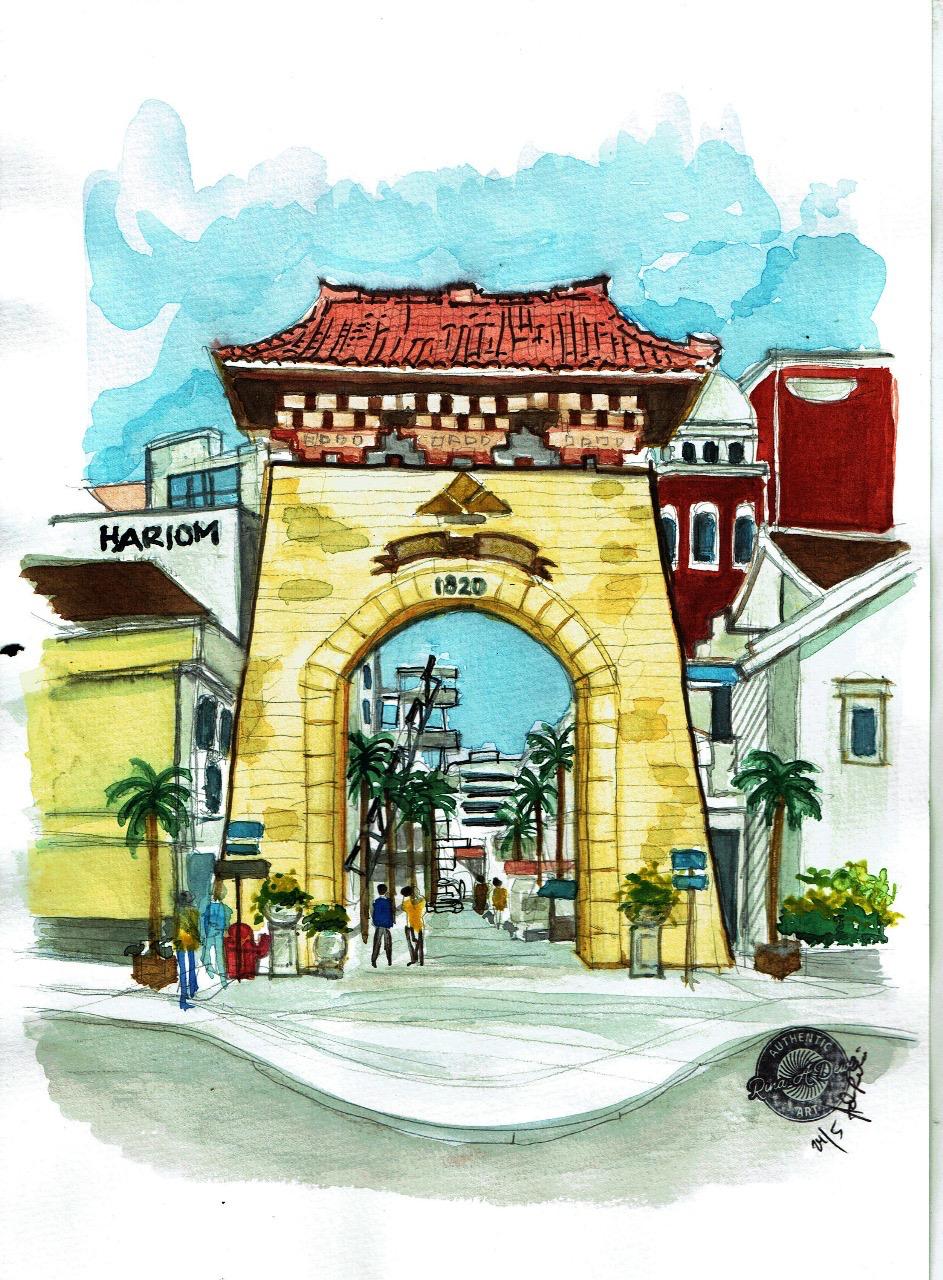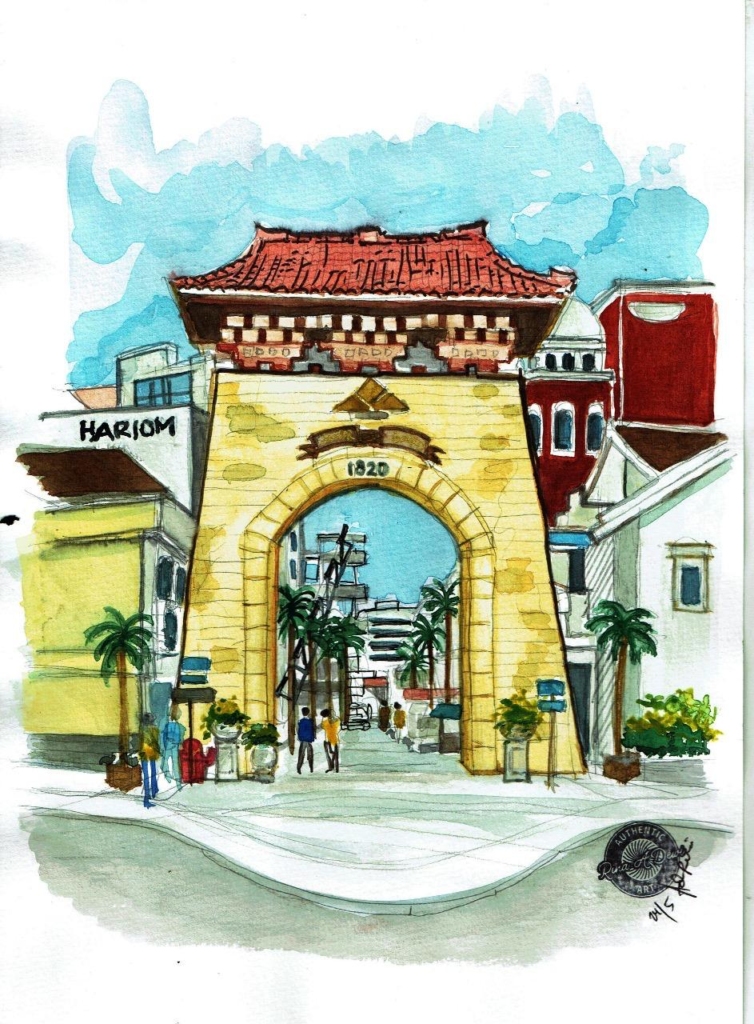
On June 19, 2025, the Governor of the Jakarta Special Region, Pramono Anung, made a significant visit to Pasar Baru—once the pride of Jakarta’s retail scene. During the visit, he pledged to rejuvenate the area and transform it into a vibrant “hub” of urban interaction for the people of Jakarta.
📺 *Watch the Governor’s visit here: [YouTube Link](https://www.youtube.com/watch?v=ZgeUKOz9Ygo)*
The commitment was later echoed by Deputy Governor Rano Karno during the Discover Betawi Art and Culture event at Hotel Borobudur in June 2025. Rano affirmed that the revitalization of Pasar Baru will be funded through Jakarta’s regional budget (APBD) in the 2026 fiscal year.
📰 *Read the Deputy Governor’s statement here: [Antara News Link](https://www.antaranews.com/berita/4889689/wagub-rano-sebut-revitalisasi-pasar-baru-pakai-apbd-2026)*
The ambitious plan has ignited hopes—particularly among Generation X and Baby Boomers who grew up with fond memories of the once-bustling retail district. In the 1980s, Pasar Baru, located in Sawah Besar, Central Jakarta, was the go-to destination for premium shoes, luxury watches, fine textiles, and high-quality household goods. The writer of this article recalls purchasing branded sports shoes there in the mid-1980s.
Weekends used to see Pasar Baru packed with shoppers. During festive seasons like Eid and Christmas, the streets were swarmed not only by Jakartans but also by foreign tourists. But that was two or three decades ago.
Pasar Baru Today: A Shadow of Its Former Self
Today, the Pasar Baru of yesteryear feels like a distant memory. When the writer mentioned recently shopping there, a fellow Baby Boomer responded with disbelief: “ Does Pasar Baru still exist?” That, in a nutshell, is its current image—its once-vibrant glory now faded, nearly forgotten.
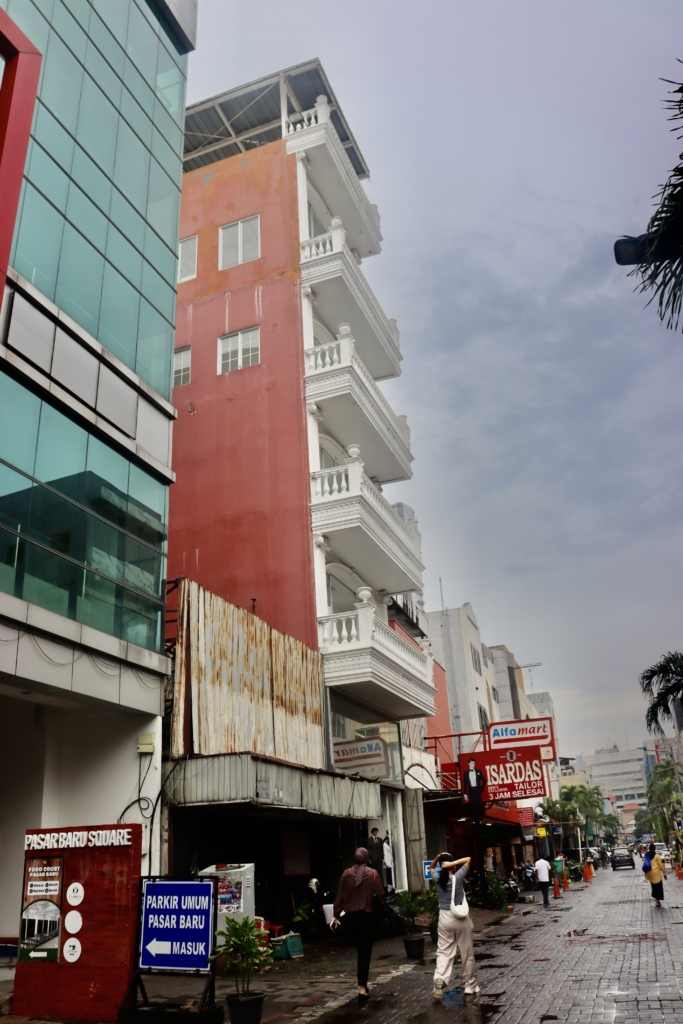
The difference between Pasar Baru now and its past is stark—like night and day. Gone are the throngs of shoppers and bustling alleyways. Instead, the streets are quiet, many stores are shuttered, and visitors are few and far between.
The Spirit of Jakarta
Deputy Governor Rano Karno described Pasar Baru as the “spirit” of Jakarta—and rightfully so. The district is deeply entwined with the city’s historical evolution.

In 1808, Governor-General Herman Willem Daendels relocated Batavia’s administrative center from Oud Batavia (Kota Tua) to Nieuw Batavia in Weltevreden—around what is now Pasar Baru. Traces of that colonial golden age are still visible in landmarks like Gambir Station (formerly Weltevreden Station), Jakarta Cathedral, Immanuel Church, RSPAD Gatot Subroto (formerly Groot Militair Hospitaal), Jakarta Arts Building (Stadsschouwburg), and the Pos Bloc (formerly the central post office).

Pasar Baru itself, established in 1820 as Passer Baroe, was originally an open-air market built to serve Dutch elite settlements nearby. Over time, it grew into a bustling commercial center dominated by Chinese traders.
The district soon became Jakarta’s oldest hub for imported goods—ranging from watches and shoes to fabrics and household wares. It was also a prime location for foreign currency exchange.
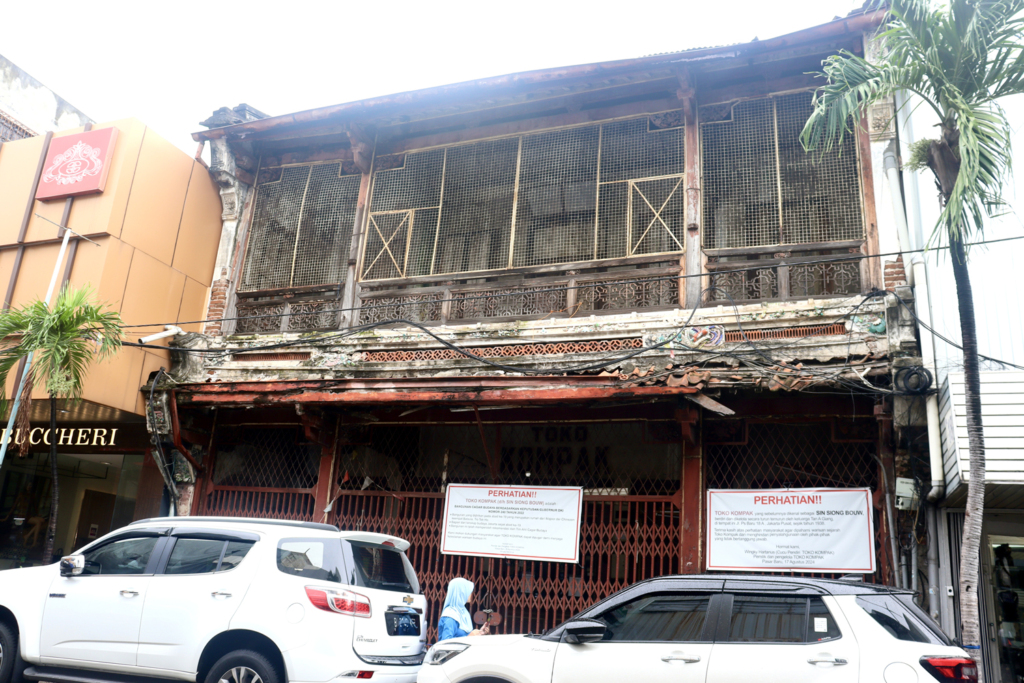
Cultural Landmarks and Forgotten Legacies
Nestled within the historic Pasar Baru district stands Toko Kompak—a building steeped in heritage and memory. Once known as Sin Siong Bouw, this structure was the former residence of Tio Tek Ho (1857–1908), a prominent Chinese leader who held the title of Mayor of the Chinese Community (Majoor der Chinezen) in Batavia during the late 19th and early 20th centuries.
Toko Kompak is no longer in operation. The store has long been closed, and the building now appears neglected and weathered by time. Yet, despite its deteriorating condition, the original architectural form remains intact—offering a rare and valuable glimpse into the residential styles of Pasar Baru’s bygone era. This silent structure stands as a reminder of the district’s layered history and the influential figures who once shaped its cultural landscape.
Known as a store selling bags and watches, Toko Populer in Pasar Baru holds a remarkable place in Indonesia’s national history. It was within the walls of this very shop that the Indonesian national anthem, Indonesia Raya, was first recorded onto vinyl in 1927—a historic milestone in the country’s independence movement.
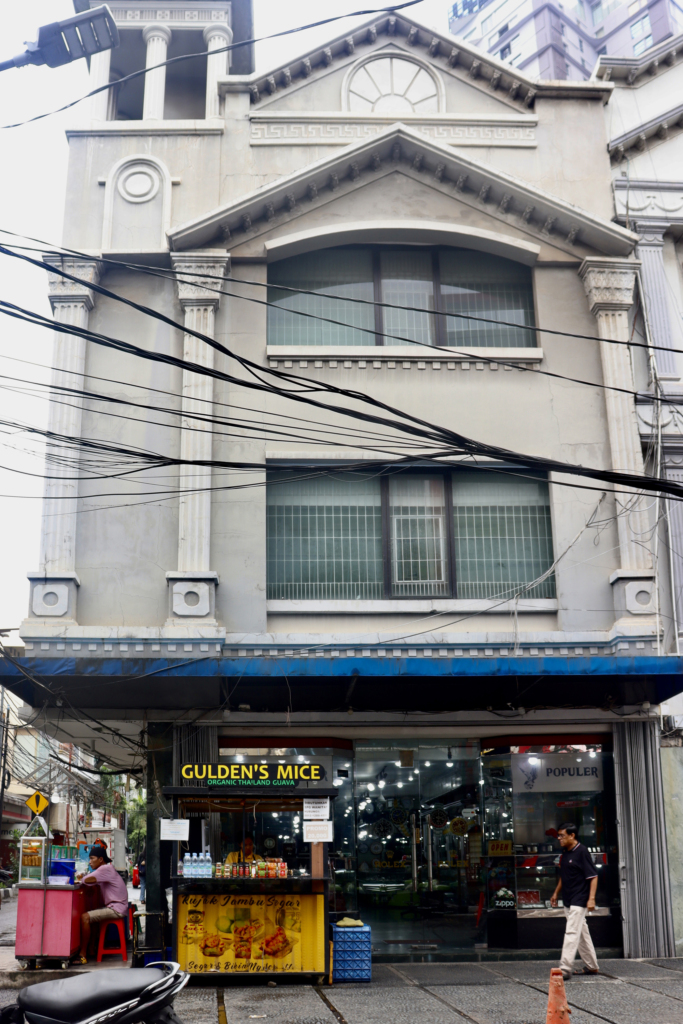
Just a year later, the anthem was played publicly at the closing of the Second Youth Congress in Jakarta in 1928, an event that culminated in the declaration of the Youth Pledge (Sumpah Pemuda)—a foundational moment in Indonesia’s journey toward unity and nationhood.
Far more than just a retail outlet, Toko Populer stands as a living monument to the country’s cultural and political awakening.
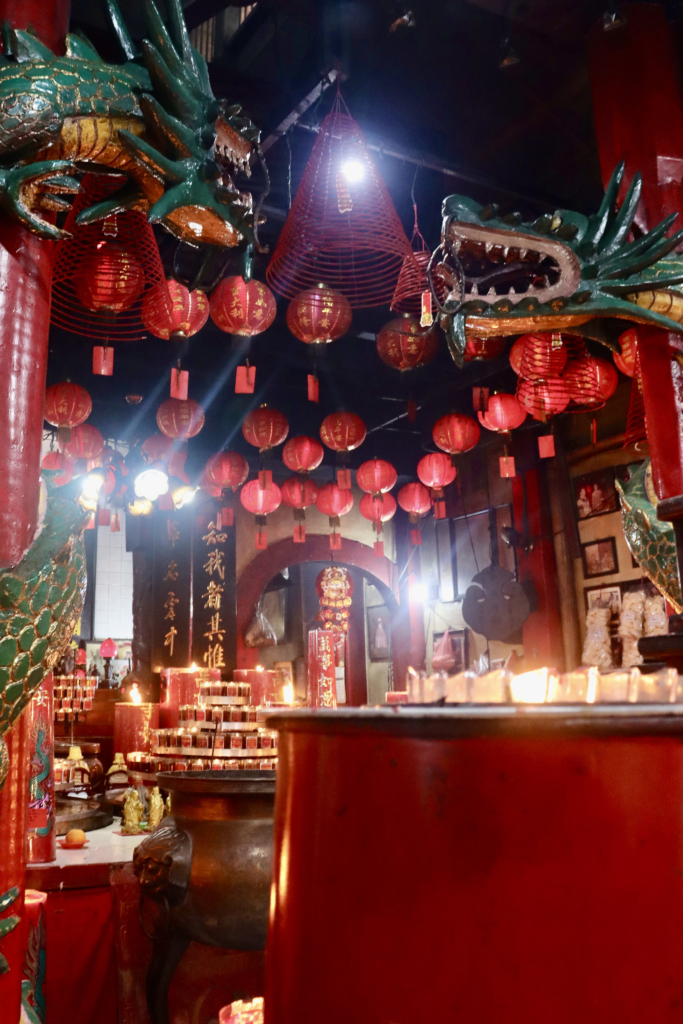
The district reflects Jakarta’s multicultural character. Indian traders once dominated the textile business and established communities complete with temples, schools, and restaurants. Places of worship like the Hare Krishna Temple, Sathya Sai Baba Study Center, Sikh Temple, Vihara Dharma Jaya (Sin Tek Bio, founded in 1698), and PNIEL Church (nicknamed the Chicken Church) illustrate Pasar Baru’s cultural and religious diversity.
With the arrival of shopping centers like Metro Atom and Harco, as well as countless street vendors, Pasar Baru continued to evolve—but its golden era gradually dimmed in the face of modern malls and e-commerce.
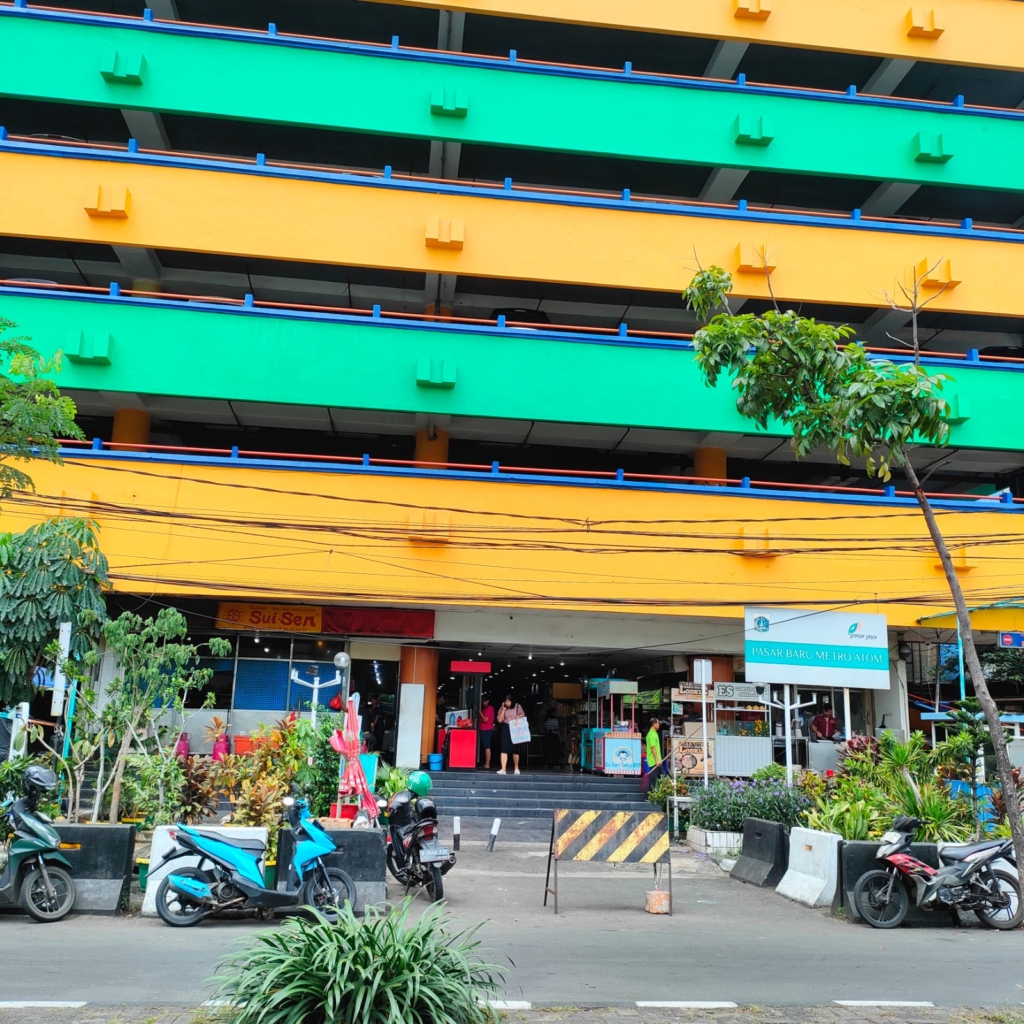
The Long Decline and Current Challenges
For Merry Srifatmadewi (59), a lifelong resident of Jakarta who was born and raised on Jalan Pasar Baru, the area once symbolized the vibrant pulse of the capital. She fondly remembers Pasar Baru as a bustling commercial hub—a must-visit destination for anyone setting foot in Jakarta for the first time. “It was the place everyone had to see,” she recalls.
But today, Merry describes the district’s condition as being in freefall, a sharp decline that became especially apparent in the aftermath of the COVID-19 pandemic. What was once a proud landmark of Jakarta’s retail landscape now struggles to hold on to its relevance in a rapidly changing city.
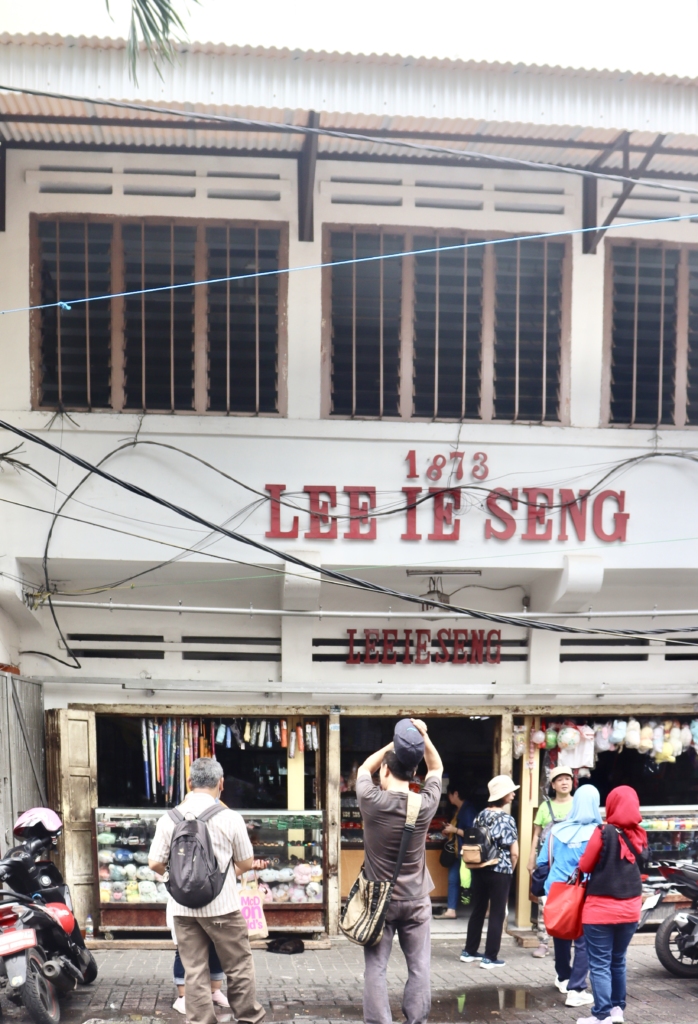
She highlights fundamental issues that plague the area: poor waste management, foul odors, unreliable drainage causing floods, chaotic traffic, and parking areas dominated by local thugs. Many businesses have closed due to a lack of successors willing to continue family-run stores.
The shift in consumer behavior—favoring online shopping—also adds to the challenge. “Most visitors nowadays come out of nostalgia,” says Merry, who once owned a music store in Metro Atom.
Reviving Pasar Baru: A Path Forward
Before inviting the public to return to this iconic commercial zone, Governor Pramono Anung and Deputy Governor Rano Karno must first address these foundational issues—improving sanitation, infrastructure, security, and overall visitor experience. Any revitalization effort must be holistic and sustainable.
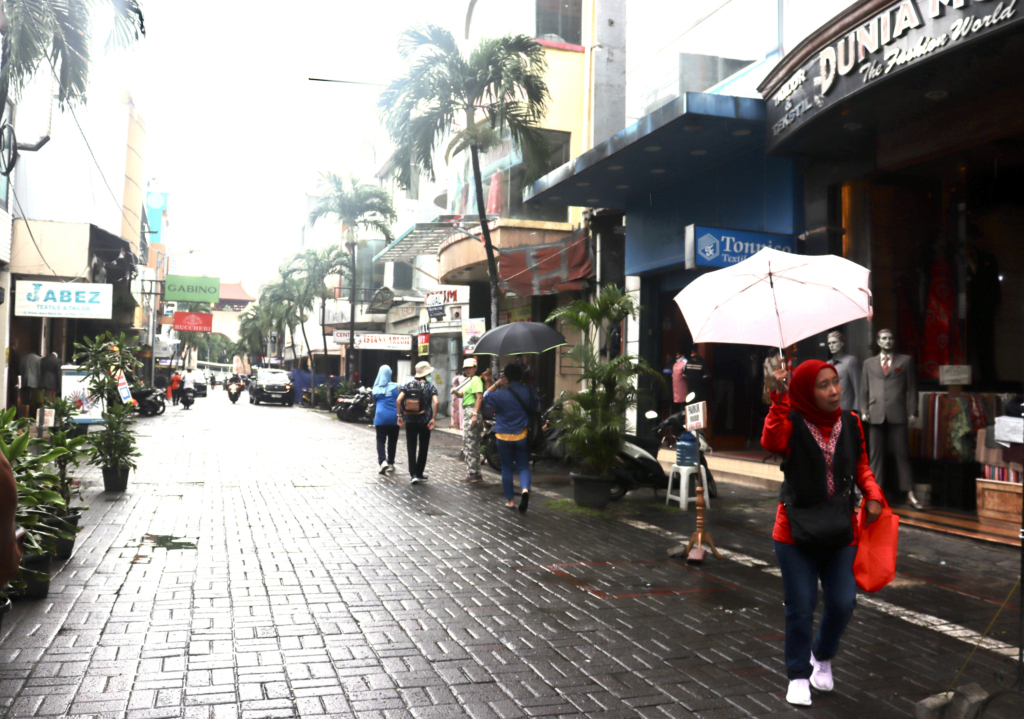
Pasar Baru is more than just a market. It is a living narrative of Jakarta’s socio-economic transformation from the colonial era to the digital age. It represents a meeting point of cultures, a marketplace of stories, and the heartbeat of the city.
To breathe life back into Pasar Baru is to reignite Jakarta’s soul—restoring a historic trading district into a thriving symbol of the capital’s resilience and cultural richness.
